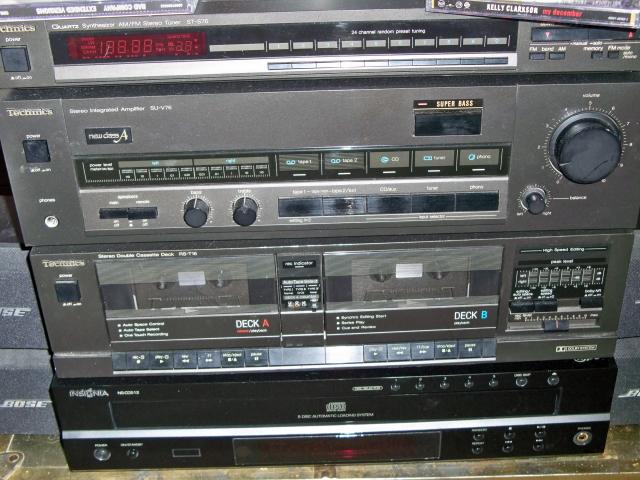A Guide to Buying a Stereo for Less Than $50
There is no reason for the music to stop just because you are broke. When it comes to stereo equipment, if there is a will there is a way. For example, you could build a stereo around a mini amplifier like this one:


I've had great luck finding stereo equipment for less than $50. I have two compact stereos and a full-sized component stereo and all cost less than $50.
Here are three ways to buy a stereo for less than $50:
At some point, everyone wants a nice stereo. But, there are limits to every family budget. Sometimes a luxury like a stereo can seem like an impossible dream. In a chronically under-employed America, a stereo can seem like a far away dream. Fortunately, with a little perseverance and good, old-fashioned, ingenuity, you can put together a pretty decent little stereo for $50 or less. The $50 price point is so low that many people can afford it by a few simple changes in their budget, a few sales on ebay, mowing a lawn or two, or cashing in that change jar.
Once you have $50, here are three ways to spend it on stereo equipment:
1. Bookshelf Mini System. If you are a plug and play, cash and carry, buy it and be done kind of person, a mini stereo is a perfect solution. Look for economical systems by Coby, GPX, Supersonic, and Jensen. If you have $50, you can just go to Kmart and pick up a nice little mini stereo like the GPX Home Music System with CD player. It has an AM/FM tuner, a vertical CD player, and accepts external inputs from a device earphone jack or an RCA stereo cable. That allows you to play music from an MP3 player or attach a stereo device like a turntable. The little system isn't overly loud, but puts out nice, clear, sound that is adequate for a bedroom, dorm room, or office. It also has a plug for headphones or ear buds. I found it an easy way to stream music from my Barnes & Noble Nook.
2. Lepai Tripath Class-T Hi Fi Amplifier & Bookshelf Speakers Combination. If you are a bit more adventurish and you already have a sound source like a computer, tablet, or MP3 player, you might get a stereo with a little more power by ordering a Lepai Tripath Class-T Hi Fi Audio Mini Amplifier and computer speakers. I was intrigued by this system when I first saw it on the RetroThing Blog. For less than $25 on Amazon.com, you can get a small mini amplifier that is great for bookshelf speakers. The mini amp is a jump in power over most of the mini systems and gets you 20 watts of power for powering some decent speakers. Of course, finding speakers for less than $27.50 is a challenge. Right now, you can get a pair of
Pyle Home PCB3BK 3-Inch 100-Watt Mini Cube Bookshelf Speakers - Pair (Black)
for less than $30 at Amazon.com. These 4-star rated speakers should be perfect for a small system and would be right at home on a full-sized stereo.
3. Thrift Store Stereo. If you like the thrill of the hunt, nothing beats rummaging through thrift stores for old bookshelf or component stereo systems. There is definitely an art to buying stereos at thrift shops, but with a little luck you can probably find a receiver and a couple of speakers for less than $50. Alternatively, complete mini systems can be found for between $20 and $50. I've bought and enjoyed very solid bookshelf systems from Aiwa and Magnavox at thrift stores for less than $50 each. Both had AM/FM tuners, multi-disc CD changers, and dual cassette decks. I was able to build a full-sized stereo with amplifier, tuner, and speakers for less than $40.
If you want a stereo, there are bargains to be found. Cost shouldn't stop the music!
Sources:
Amazon.com
www.retrothing.com













.jpg)











